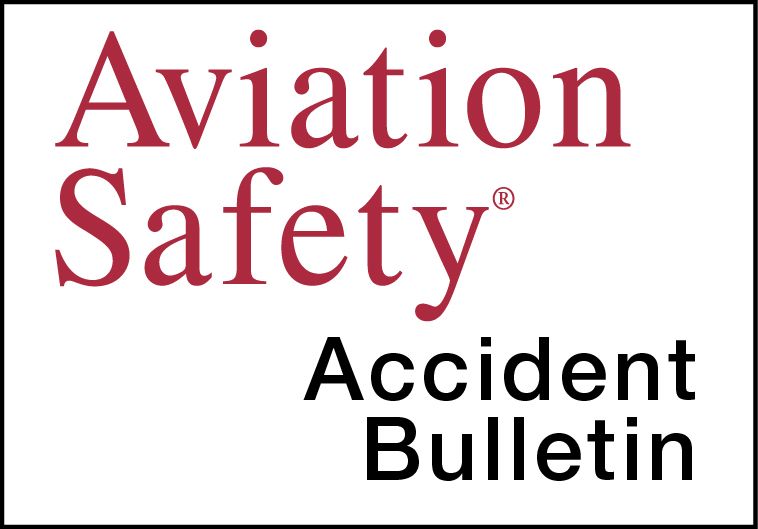AVweb’s General Aviation Accident Bulletin is taken from the pages of our sister publication, Aviation Safety magazine. All the reports listed here are preliminary and include only initial factual findings about crashes. You can learn more about the final probable cause on the NTSB’s website at www.ntsb.gov. Final reports appear about a year after the accident, although some take longer. Find out more about Aviation Safety at www.aviationsafetymagazine.com.
April 16, 2022, Grantsville, MD
Piper PA-32-260 Cherokee Six 260
The airplane was substantially damaged at about 2046 Eastern time when it was landed off-airport after the pilot reported control difficulties. The instrument-rated commercial pilot and two passengers received minor injuries. Instrument conditions prevailed; an IFR flight plan had been filed.
About two hours into the flight, with the airplane cruising at 11,000 feet MSL, it approached clouds. The pilot increased engine power and turned on pitot heat. The airplane was “underperforming and unable to climb over the clouds,” according to the pilot. After entering clouds, he noticed decreasing airspeed as the autopilot increased the airplane’s pitch to maintain altitude. The pilot disengaged the autopilot, lowered the nose, and noted that pitch control was difficult. There were no signs of ice on the wings or windscreen.
The pilot notified ATC, and the airplane descended out the clouds into heavy rain and continued down. The pilot elected to perform a forced landing to a road, during which the airplane impacted trees and terrain, resulting in substantial damage.
April 19, 2022, Long Beach, Calif.
Diamond DA42 Twin Star
At about 1538 Pacific time, the airplane was substantially damaged when its right main landing gear collapsed during landing rollout. The flight instructor and the pilot were not injured. Visual conditions prevailed.
The pilot reported performing a short-field landing, and while on the rollout and about 750 feet beyond the touchdown point, the right main landing gear collapsed, and the right wing contacted the ground. Examination revealed the composite landing gear support had separated from the wing structure.
April 20, 2022, Sylmar, Calif.
Cessna 337 Skymaster
The airplane was substantially damaged at 1226 Pacific time after the pilot apparently lost control while troubleshooting a landing gear problem. The solo pilot was fatally injured. Visual conditions prevailed.
After takeoff, the pilot reported his landing gear did not fully retract and requested to stay over the airport at 2500 feet. Witnesses observed the airplane in a left turn. They then observed its nose drop and the airplane spiral to the ground. Examination established flight control continuity from the cockpit to the respective flight control surfaces. Three of the four tanks had been breached and the “smell of fuel was present at the accident site,” according to the NTSB.
April 21, 2022, Santa Barbara, Calif.
Cessna T206H Turbo Stationair
At about 1120 Pacific time, the airplane was substantially damaged when it veered off the runway during a landing. The pilot and passenger were not injured. Visual conditions prevailed.
The left main landing gear touched down first, followed by the right main. As the nose wheel settled onto the runway, the airplane immediately veered to the right. Despite the pilot’s control inputs, the airplane veered left and right several times, and both wings struck the ground. Examination revealed the nose gear trunnion was fractured.
April 21, 2022, Covington, GA
Cessna 340
The airplane was destroyed at about 1844 Eastern time apparently stalled and spun to the ground. The private pilot and student pilot were fatally injured. Visual conditions were reported.
According to the student pilot’s partner, he and the private pilot airlined to Texas and returned with the accident airplane the previous day. On the day of the accident, the student pilot intended to begin flight training with his flight instructor but departed with the private pilot, who previously said he could train the student pilot.
On the accident flight, after departing Dekalb-Peachtree Airport at about 1640, the airplane flew to nearby airports and began a leg to Covington, Ga., at about 1813. Multiple witnesses saw the airplane make a “hard right” banking turn, start to spiral downward and then impact a row of parked, empty semi trailers about a nautical mile southeast of the destination airport. The airplane was destroyed by post-impact fire.
April 23, 2022, Cedar City, Utah
Diamond DA40 Star
At about 1848 Mountain time, the airplane was destroyed when it apparently flew into a canyon and collided with terrain. The pilot and the three passengers were fatally injured. Visual conditions prevailed.
The pilot rented the airplane, intending to fly a multi-leg, round-robin, cross-country flight to several area airports. A pilot-rated motorist reported observing what is believed to be the accident airplane flying up the canyon over the river, at about 300 feet AGL. A second witness observed what is believed to be the accident airplane flying over the highway at about 200-300 feet AGL. In his mirror, he saw the airplane bank really hard “as if the airplane were trying to turn around in the narrow canyon,” according to the NTSB. First responders later located the airplane wreckage while responding to a vegetation fire. The airplane impacted mountainous terrain along the southern edge of a canyon at 6583 feet MSL.
This article originally appeared in the July 2022 issue of Aviation Safety magazine.
For more great content like this, subscribe to Aviation Safety!



































